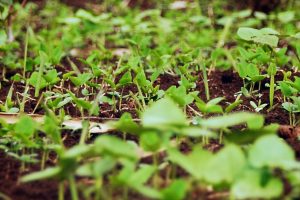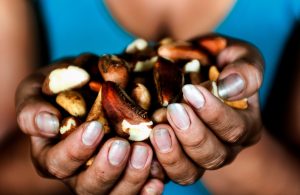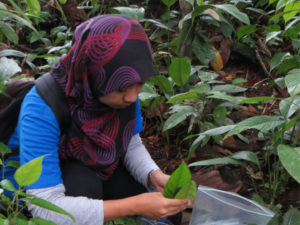During the Global Landscapes Forum (GLF) in Bonn, Germany, in December 2018, the CGIAR Research Program on Forests, Trees and Agroforestry (FTA) spoke with Vania Olmos Lau, a biologist, youth representative for the GLF, and youth representative for the Youth in Landscapes Initiative (YIL).
At the GLF, Olmos Lau was part of the panel titled, “Delivery of quality and diverse planting material is a major constraint for restoration: What solutions, what emerging needs?”, hosted by FTA with Bioversity International, World Agroforestry (ICRAF), and supported by the Food and Agriculture Organization of the United Nations (FAO).
During the session, Olmos Lau emphasized that achieving the Bonn Challenge is also important to youth. She cited as examples a lack of knowledge and access to seeds in Paraguay, as well as bureaucratic hurdles in Mexico, as existing barriers to restoration.
Read our interview with Vania Olmos Lau here, edited for length and clarity.
What practical actions can young people take to protect forests and trees?

First of all, it is important that the people that care about this, that already have experience, and that already have a good institutional base, approach the young people that are interested, have the enthusiasm, and have the will.
These young people know that the protection of forests and trees is important, but they might not know all the details. In this case, people with experience can help young people focus their efforts correctly, on things like restoration.
Read also: Using forests to support wellness
How can we strengthen the capacity of local communities if younger generations lack interest and knowledge is centered on older generations?
It needs to be done in a fun way. Youth everywhere have so many distractions. With the Internet we see all these cool things happening in the cities, and not in rural areas. We need to find a way to make the integration between generations fun. And to make agriculture, and nature, fun for everyone – something that is attractive, and something that people want to do.
What I’ve actually learned from the older people in my family is that we need to change and that a lot of these changes aren’t happening because we just don’t have the will, and because we have very internally ingrained habits. The new generation is paying attention to this and this is changing, but there’s a lot of resistance from the older generation to make these changes.
How can we move from restoration pledges toward restoration action?

It’s very important to use local species, because what I’ve seen in the field a lot is that when you introduce species that might be regionally local, but not adapted to a specific site – and this can happen a lot in mountainous regions where soil and climate can change quite quickly – these relatively exotic plants die a lot.
At least in the case of Mexico, where we’ve had experience, local communities notice that the plants that other institutions bring have a higher mortality rate. And when they start experimenting with the seeds from local trees, they have a much higher survival rate.
What role can seed systems play?
In Mexico, there is a lot of exchange of seeds. Traditionally, communities have done this for a very long time. That’s why we are the center of origin for so many important agricultural species, especially corn. Corn is relevant for all the world, and it’s very important to support communities to continue to do this and ensure that they are not influenced by the seeds that are provided by the government and external companies, which, in many instances, can have a greater yield but at the cost of losing diversity. And as we know, with climate change, and with all these changes that we have to adapt to, having diversity is super important.
Read also: The right species for the right purpose
How can economic incentives support communities to restore and conserve forests?
Economic incentives should be focused first and foremost on conservation, through, for example, payment for ecosystem services. After the conservation of existing natural ecosystems is guaranteed, then economic incentives can focus on restoration.
Restoration is an opportunity to give youth and young people a chance to have a good job that means something and that is economically viable for them. In this regard there’s a lot of opportunity to involve youth.
When I was doing my thesis in Paraguay, for example, I compared how different land uses interact, and one of the land uses was a restoration project. It was interesting to see that the farmers were interested in restoration, and in trees, because wood was becoming very expensive in the region. They would therefore want forest on their land for their cattle.
This was very interesting because cattle, as we know, is a very important deforestation driver, but in this case, it was a reason to keep some forest on their land. It’s very important that we see this, and see how different land uses compete, or have synergies.
By the FTA communications team.
The CGIAR Research Program on Forests, Trees and Agroforestry (FTA) is the world’s largest research for development program to enhance the role of forests, trees and agroforestry in sustainable development and food security and to address climate change. CIFOR leads FTA in partnership with Bioversity International, CATIE, CIRAD, ICRAF, INBAR and TBI. FTA’s work is supported by the CGIAR Trust Fund.













